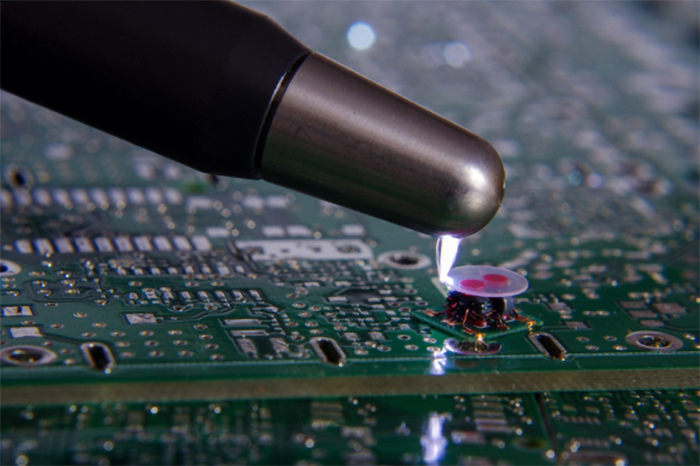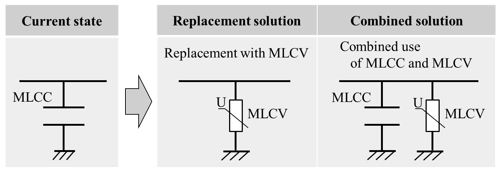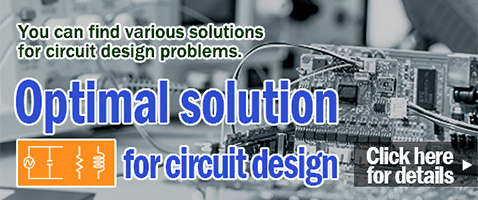Points for Selecting ESD Suppression Circuits and Components for Automotive Electronic Devices
April 25, 2025

- Optimal ESD Suppression Circuit
- When Only ESD Suppression is Required: MLCV Alone
- To Achieve Noise Suppression As Well: Parallel configuration of MLCC + MLCV
- Advantages of Introducing ESD Suppression Components and Precautions for Selecting Them
- Panasonic's ESD Suppression Components: ESD Suppressor
- Summary and Future Direction
- Related product information
- Related information
The previous article explained the importance of ESD suppression in automobiles and introduced technologies for safely releasing static electricity as well as evaluation methods for them. In order to minimize the impact of electrostatic discharge (ESD) on electronic devices, it is important to appropriately design circuits and select components. In particular, automotive electronic devices require a balance with noise suppression in addition to enhanced ESD immunity. This article explains ESD suppression by using a multi-layer ceramic varistor (MLCV) alone and the effect of noise suppression through parallel configuration with a multi-layer ceramic capacitor (MLCC), and introduces the optimal circuit configuration.
1. Optimal ESD Suppression Circuit
1-1. When Only ESD Suppression is Required: MLCV Alone
When ESD suppression is a top priority, the use of an MLCV alone is effective. MLCVs have high ESD immunity and can effectively protect ICs and electronic circuits without the discharges between terminals that MLCCs cause. In addition, as they do not require capacitors like MLCCs do, they provide excellent performance even in environments that require miniaturization and high immunity. The use of an MLCV alone also provides the benefit of reducing the number of components and enabling simple circuit configurations in designs with the purpose of ESD suppression.
1-2. To Achieve Noise Suppression As Well: Parallel configuration of MLCC + MLCV
When noise suppression is required in addition to ESD suppression, a configuration in which MLCC and MLCV are connected in parallel is suitable. MLCCs have a large electrostatic capacitance and play a role in reducing noise. However, when high-voltage ESD is applied, there is a risk of discharge between terminals and deterioration of electrical characteristics. Combined use with an MLCV can protect the MLCC from the impact of ESD and help maintain stable performance.
This parallel configuration is particularly suitable for automotive communications and the protection of high-precision electronic devices as it provides a good balance between noise suppression and ESD suppression. Adjusting the capacitance of the MLCC according to the design enables finer noise suppression control. As a result, ESD suppression can be enhanced while improving communication quality. Fig. 1 shows circuit configurations for each use case.

2. Advantages of Introducing ESD Suppression Components and Precautions for Selecting Them
2-1. Reduction of IC Failure Risk and Avoidance of NTF
Use of an ESD suppression component can protect critical ICs, especially those that control automotive communications and drive systems, while significantly reducing the risk of electrostatic discharge failures. As a result, the reliability of the entire system is improved, and failures that occur in critical components such as transceiver ICs as well as NTFs (No Trouble Found, non-reproducible failures) can be prevented.
2-2. Importance of Judgment from the Supply Side (BCP) and Comprehensive Perspectives
When choosing ESD suppression components, simply choosing those with high performance is not enough. You also need to consider the stability of the supply such as the manufacturer's supply system, component compatibility, and future business continuity plans (BCPs). In addition, it is important to consider the most suitable ESD suppression components from comprehensive perspectives, including comparisons with components such as Zener diodes (ZDs) and ESD suppressors.
3. Panasonic's ESD Suppression Components: ESD Suppressor
For ESD suppression components, Panasonic offers MLCVs introduced by this report as well as ESD suppressors. An ESD suppressor has gaps inside it, and when a high voltage is detected, it protects the circuit by releasing any unnecessary voltage via discharges between the gaps. "Suppressor" literally means "something that suppresses," and it quickly reduces excess voltage caused by ESD to prevent damage to electronic components. As a result, the durability and reliability of electronic devices are greatly improved.
ESD suppressors are characterized by low electrostatic capacitance and are most suitable for ESD suppression in antenna circuits and ultra-high-speed communication circuits.
Product detail page:Chip varistors、ESD suppressors
4. Summary and Future Direction
4-1. New Evaluation Method and Discharge Mechanism Analysis
Through observation of discharges and repeated application tests using the ESD visualization camera introduced in the previous article, the cause of defects that were previously often overlooked can be clarified. In order to improve the reliability of products, especially in the automotive field, there is a need to enhance discharge mechanism analysis and verification methods.
4-2. ESD Suppression to Respond to Higher-speed, Higher-reliability Automotive Communications
In addition, with the evolution of automotive communication technology, which enables higher speed communication lines that support 5G and autonomous driving technology, there is growing demand for ESD suppression components with higher immunity and lower capacitance. The development of next-generation components such as MLCVs and their effective evaluation will be the key to improving the performance and safety of automotive electronic devices in the future.
5. Related product information
6. Related information
- Basics of Surge/ESD and Protection Components - Panasonic
- Noise-reducing measures start with knowing about the different types and properties of noise.
- On-board CAN-FD compatible "Chip Type Multilayer Varistor 2-in-1 Type"
- ESD Controls for Automotive LAN (Ethernet)
- Basics of Electrostatic Discharge (ESD) Suppression and Testing Processes


